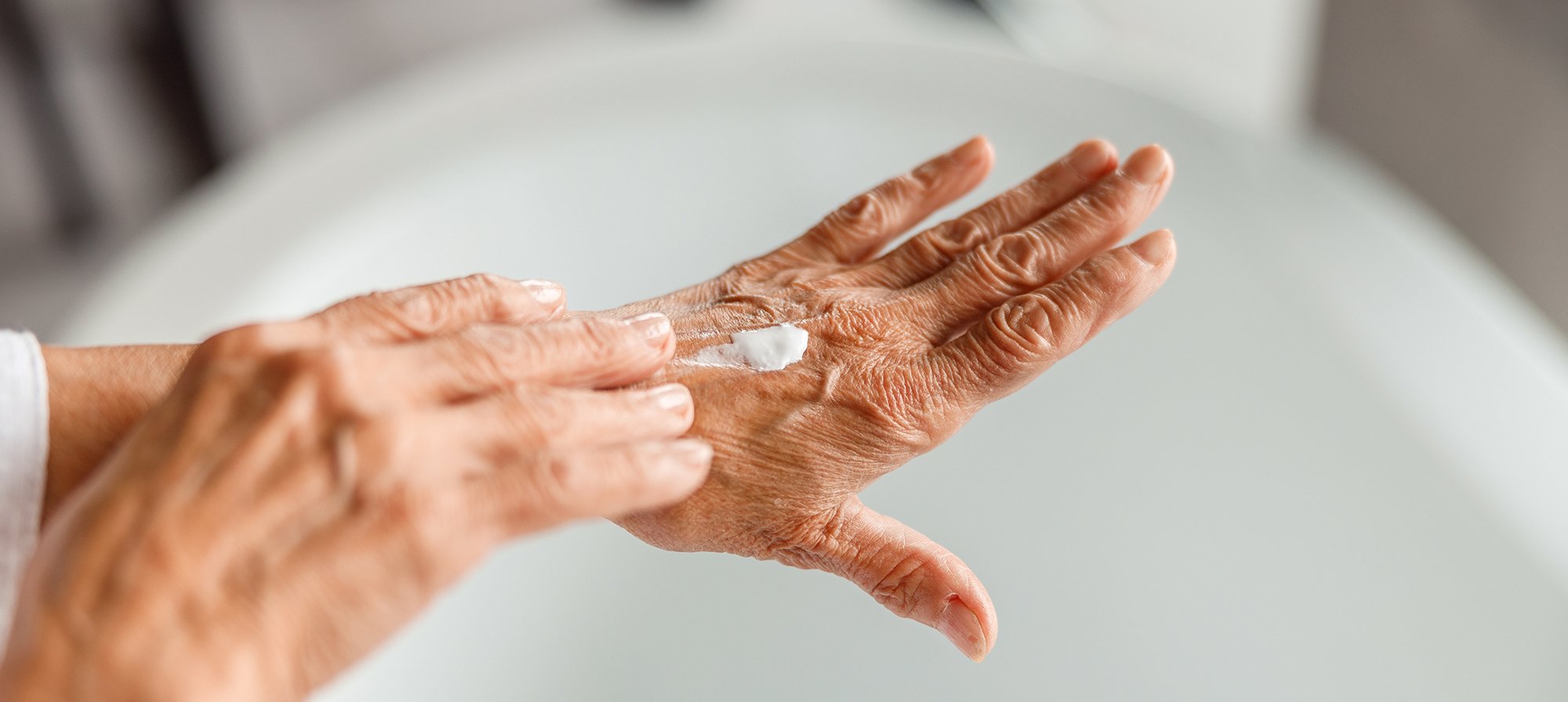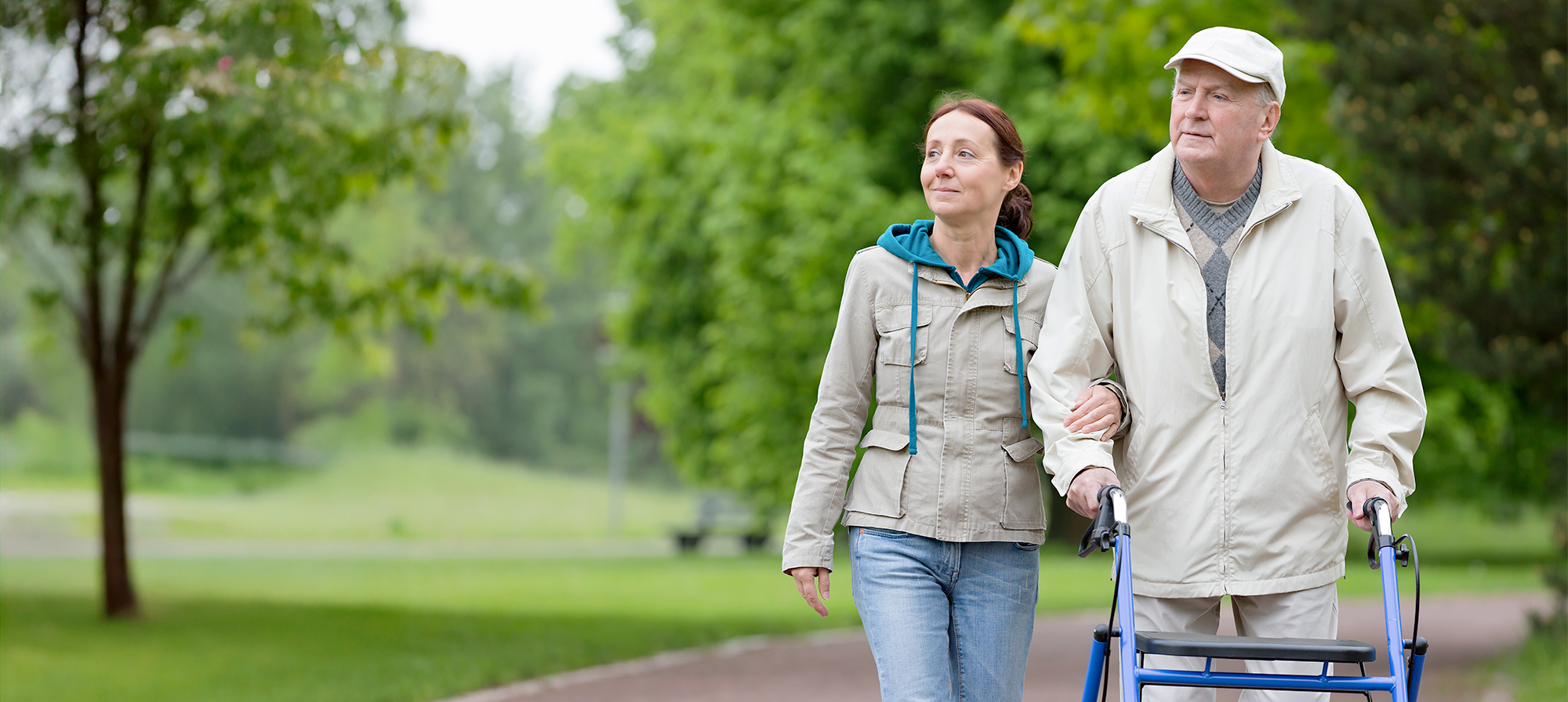Caring for your skin properly can improve the way your skin both feels and looks. It can protect your skin’s health, too. As you get older, time causes skin to become more delicate. You may notice your skin is drier. Wrinkles and age spots appear. You are at higher risk of developing skin cancer.
Such changes to aging skin may be natural, but you can delay them by taking extra good care of your skin. It’s never too late, or too early, to start focusing on skin care—a habit that is as important for men as it is for women.
Why you want to be good to your skin
Skin is the heaviest and largest organ of your body. Your skin makes up about one-seventh of your total body weight. Take a moment to think about some of the many things your skin does for you. Your skin:
- Contains nerve receptors so that you can feel touch, pain, warmth, cold, and pressure
- Helps control your body’s fluid balance
- Helps regulate your body’s temperature
- Protects you from bacteria and chemicals
- Serves as a storeroom for water, fat, and other substances
- Produces hormones important for your entire body
- Houses blood and lymph vessels, nerves, sweat glands, oil glands, and hair roots

Skin care starts with taking care of your overall health
What’s good for your overall health can also boost the health of your skin. Here are some habits that help with both:
- Eat plenty of nutrient-rich foods—like fruits and veggies, protein, and whole grains—to have the best chance of getting all the healthy vitamins and minerals you need.
- Go for foods that have healthy monounsaturated and polyunsaturated fats, such as salmon, nuts, and avocados.
- Stay hydrated by drinking water and eating water-dense foods, such as watermelon, cucumbers, tomatoes, and peaches.
- Learn how to manage stress.

Take a multifaceted approach to skin care
Beyond caring for your overall health, you have many options when it comes to caring for your skin. From the way you wash your face to how you moisturize and use sunscreen—you are in charge. The more you know about skin care, the better you can protect your skin. And taking a multifaceted approach can benefit your skin the most. Read on for specific skin care tips.
1. How to wash your face
Having done this your entire life, you likely don’t feel you need further instruction. But there are some important do’s and don’ts you may not know when it comes to this most basic skin care practice.
You want to keep your face clean, but washing can be tough on your skin. The key is to use gentle products and gentle motions.
Use a mild, fragrance-free soap or cleanser and wash with warm water, not hot. Avoid scrubbing. Rinse off all the soap. Then gently pat your skin dry with a towel.
Wash once in the morning and once at night. Also wash your face if you sweat heavily. Perspiration can irritate your skin.
After washing, apply a fragrance-free moisturizer. Be careful not to pull on the skin around your eyes, which is especially delicate.

2. How to shave
Shaving can be hard on your skin. Protect your skin by applying shaving cream or gel before shaving. Use a clean, sharp razor. And shave in the direction the hair grows rather than against it.
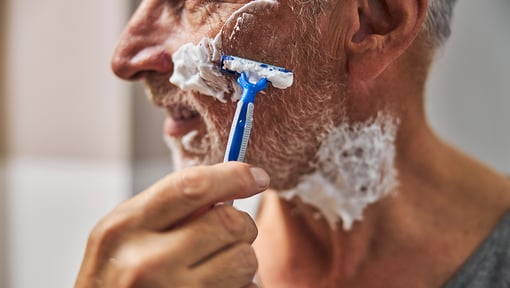
3. How to use sunscreen
Sunscreen is the first line of defense in skin protection. Sun exposure can contribute to wrinkles and age spots, as well as raise the risk of skin cancer.
Apply sunscreen daily, even if you only go outside for short bouts of time. Apply it 15 to 30 minutes before going out to all the exposed parts of your skin. Use a broad-spectrum sunscreen with an SPF of at least 30 to 50. Reapply sunscreen every 2 hours. If you are swimming or sweating heavily, reapply sunscreen more often.  4. Protect your skin from other harmful effects of the sun
4. Protect your skin from other harmful effects of the sun
You can lessen the sun’s harmful effects by avoiding exposure between 10 a.m. and 4 p.m., whenever possible. These are the hours when the sun’s rays are strongest.
Water, snow, and sand can reflect and strengthen the sun’s rays. So, try to limit the amount of time you’re exposed to sunlight when in or on the water, when engaged in snow sports, or when hanging out at the beach or hiking in the desert.
If you are going to be in the sun for a long period of time, consider wearing skin-protective clothing. Manufacturers make shirts, long pants, and wide-brimmed hats with built-in sun protection. These clothing items serve to block ultraviolet rays. Also look for sunglasses that block 99 to 100 percent of the sun’s rays.
When you work in the garden, wear gloves and a wide-brimmed hat—2 easy ways to protect and care for your skin. 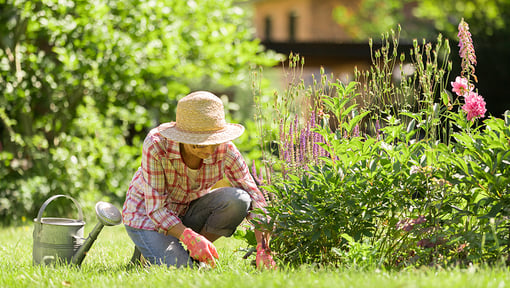 5. Moisturize to prevent dry skin
5. Moisturize to prevent dry skin
Dry skin affects both the look and feel of your skin. The elbows, lower legs, and arms tend to be most prone to rough patches and scaly skin. Dry skin may be itchy and irritated.
Possible causes for dry skin include:
- A lack of fluids (dehydration)
- A dry climate
- Stress
- Smoking
- Too much sun exposure
- Using too much soap (or not rinsing it off thoroughly)
- Diminished function of sweat and oil glands
- Diabetes or kidney disease
Take these steps to prevent or treat dry skin:
- Moisturize every day with lotions, creams, or ointments
- Wash with warm water, not hot
- Use a mild, fragrance-free soap
- Use a humidifier to add moisture to a room

6. How to deal with wrinkles, age spots, and skin tags
Time causes your skin to wrinkle. This happens due to the skin losing elasticity and gravity pulling the skin down. Most of the products on the market that tout wrinkle removal are of no use. Consult with your dermatologist if you are concerned about how wrinkles are affecting your appearance.
Another way skin may show age is the aptly named age spots. These spots are brown and flat and often are a result of spending time in the sun. Areas prone to age spots include the face, hands and arms, the back, and the feet. Sunscreen can guard against or delay age spots.
Skin tags are flesh-colored, small growths that are raised from the skin. These are common and may come and go. Skin tags most often occur on the eyelids and the neck and in skin folds on the chest and under the arms.
If you are bothered by age spots or skin tags, consult your dermatologist about ways to remove them.

7. Keep an eye out for signs of skin cancer
Skin cancer is a common kind of cancer. The main cause is sun exposure. So, take all the steps you can to protect your skin from too much sunlight. If you do notice a new or changed mole, or a new growth, bump, or sore that doesn’t heal or itches, contact your dermatologist for a checkup.
The 3 types of skin cancers are:
- Basal cell
- Squamous cell
- Melanoma
Basal cell carcinoma and squamous cell carcinoma usually grow slowly and rarely spread through the body. These cancers are often found where skin is exposed to the sun. Common places for these cancers are the head, face, neck, hands, and arms. But they can occur anywhere. These cancers often can be cured if caught before more than the local area is affected.
Melanoma, the most dangerous type of skin cancer, is rarer but can spread to other parts of the body. It can also be deadly. But if it’s caught early, it can be treated and is often curable.
Melanomas look like moles, and they may develop from moles. While most moles are benign, some may not be. So, look at any moles you may have. As for what to look for, just remember your ABCDEs:
- A stands for asymmetry. Check to see if one half of a mole looks different than the other half.
- B stands for border. Look at the border. Is it uneven or rough? Look to see if the edges are jagged rather than smooth.
- C stands for color. The color of melanomas is usually brown or black. But they can also be pink or red, white or tan, or even blue. One part may also be darker than the other. So, look for any differences in color.
- D stands for diameter. Most melanomas are larger than 6 millimeters. That’s roughly the size of a pencil eraser. But smaller moles may also be melanomas.
- E stands for evolving. Keep an eye on your moles to see if they start to change in terms of size, shape, or color. They may also become more raised. Do you notice any other changes, perhaps bleeding or itching?
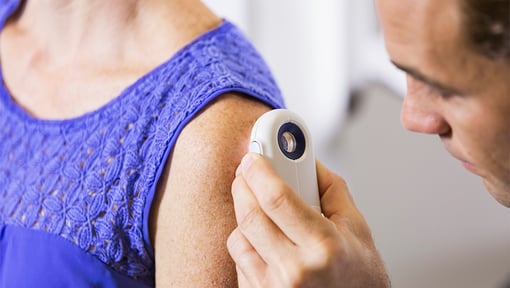
Commit to a skin care routine that pampers and protects
Develop a skin care routine based on the tips you’ve learned here. It may take a little bit more time each day to perform, but taking these steps to protect and pamper your skin is well worth it—at any age.
Not a Silver&Fit® member? Learn more about everything the program has to offer, including more helpful healthy living tips like this, here on our website.
This information is not intended to take the place of regular medical care or advice. Please check with your doctor before using this information or beginning any self-care program. Images used for this article do not depict any members of the Silver&Fit Program.
References
American Academy of Dermatology Association. (n.d.). 10 skin care secrets for healthier-looking skin. https://www.aad.org/public/everyday-care/skin-care-secrets/routine/healthier-looking-skin
American Academy of Dermatology Association. (n.d.). Face washing 101. https://www.aad.org/public/everyday-care/skin-care-basics/care/face-washing-101
American Academy of Dermatology Association. (n.d.). Sunscreen FAQs. https://www.aad.org/media/stats-sunscreen
American Academy of Dermatology Association. (n.d.). What to look for: ABCDEs of melanoma. https://www.aad.org/public/diseases/skin-cancer/find/at-risk/abcdes
Hesler, B. (2023, February 21). 5 tips to manage stress. Mayo Clinic. https://www.mayoclinichealthsystem.org/hometown-health/speaking-of-health/5-tips-to-manage-stress
Johnson, M. M., Leachman, S. A., Aspinwall, L. G., Cranmer, L. D., Curiel-Lewandrowski, C., Sondak, V. K., Stemwedel, C. E., Swetter, S. M., Vetto, J., Bowles, T., Dellavalle, R. P., Geskin, L. J., Grossman, D., Grossmann, K. F., Hawkes, J. E., Jeter, J. M., Kim, C. C., Kirkwood, J. M., Mangold, A. R., . . . Wong, M. K. (2017). Skin cancer screening: Recommendations for data-driven screening guidelines and a review of the US Preventive Services Task Force controversy. Melanoma Management, 4(1), 13–37. https://doi.org/10.2217/mmt-2016-0022
Mayo Clinic. (2022, December 6). Skin cancer. https://www.mayoclinic.org/diseases-conditions/skin-cancer/symptoms-causes/syc-20377605
Mayo Clinic. 2022, January 22). Skin care: 5 tips for healthy skin. https://www.mayoclinic.org/healthy-lifestyle/adult-health/in-depth/skin-care/art-20048237?reDate=14092023
Mayo Clinic (2021, October 5). Stress management. https://www.mayoclinic.org/tests-procedures/stress-management/about/pac-20384898
Mayo Clinic. (2023, February 21). 5 tips to manage stress.
https://www.mayoclinichealthsystem.org/hometown-health/speaking-of-health/5-tips-to-manage-stress
MedlinePlus. (2022, July 21). Aging changes in skin. https://medlineplus.gov/ency/article/004014.htm
MedlinePlus. (2023, June 20). Skin layers. https://medlineplus.gov/ency/imagepages/8912.htm
National Institutes of Health. (2019, April 11). How does skin work? https://www.ncbi.nlm.nih.gov/books/NBK279255/
National Institutes of Health. (2017, October 1). Skin care and aging. https://www.nia.nih.gov/health/skin-care-and-aging
National Eczema Association. (2017, May 26). Changing Our Laundry Routine Helped My Son’s Eczema. https://nationaleczema.org/blog/laundry-change/
Shellenberger, R., Nabhan, M., & Kakaraparthi, S. (2016). Melanoma screening: A plan for improving early detection. Annals of Medicine, 48(3), 142–148. https://doi.org/10.3109/07853890.2016.1145795
Van Amerongen, C. C. A., Ofenloch, R. F., Cazzaniga, S., Elsner, P., Goncalo, M., Naldi, L., Svensson, A., Bruze, M., & Schulttelaan, M. L. A. (2021). Skin exposure to scented products used in daily life and fragrance contact allergy in the European general population: The EDEN fragrance study. Contact Dermatitis, 84(6), 385–394. https://doi.org/10.1111/cod.13807
This article was written by Sharon Odegaard, edited by Gail Olson, and clinically reviewed by Elizabeth Thompson, RD, MPH
